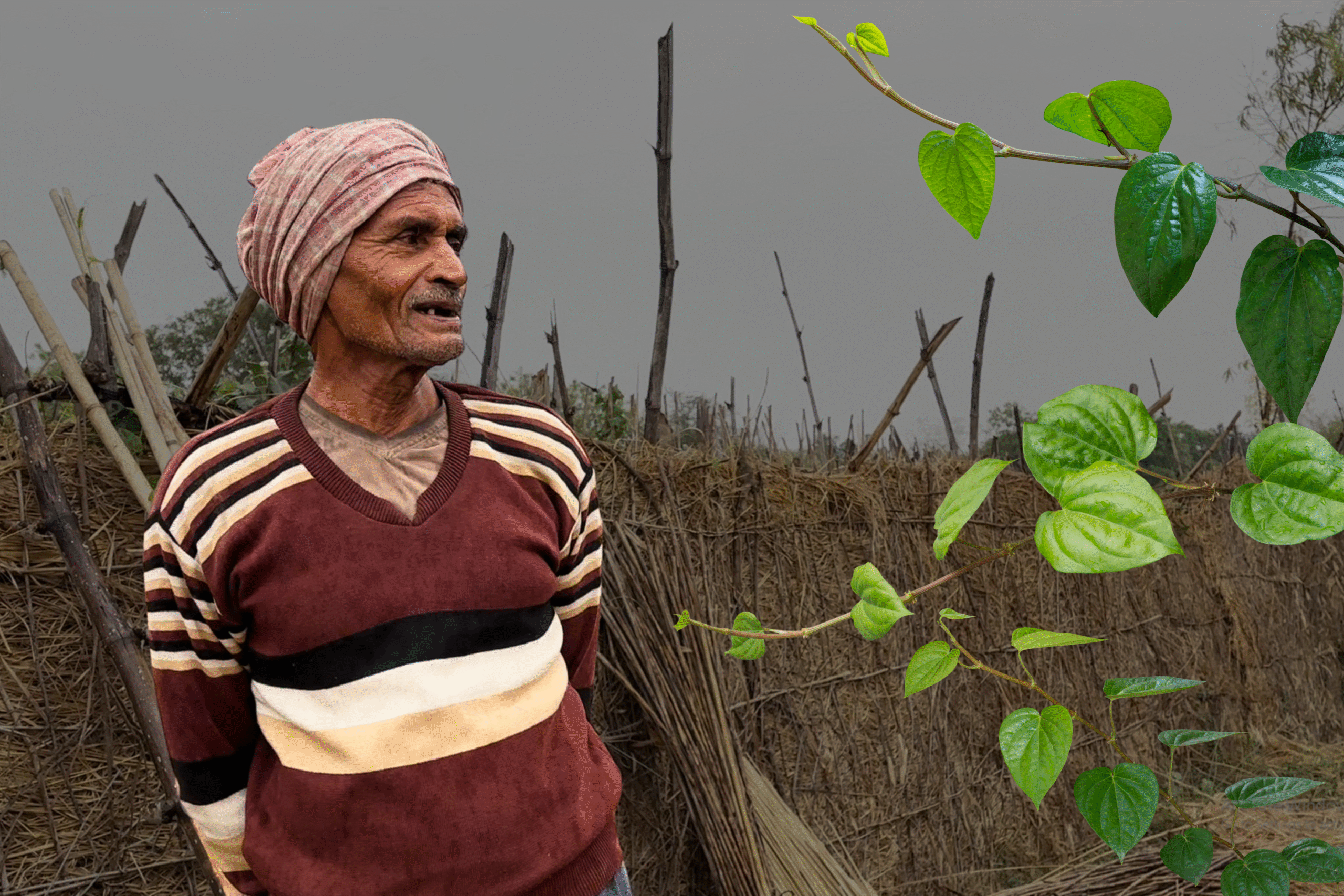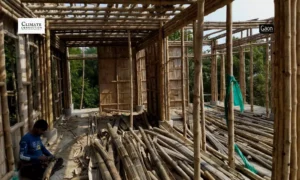After suspending hot meals for more than three years, the Uttar Pradesh government has resumed nutritious cooked meals to anganwadi children aged between three and six years.
This has brought a sigh of relief to thousands of anganwadi workers and helpers who were finding it difficult to look after the nutritional and growth needs of children.
Hot cooked meals at the 189,309 anganwadis across Uttar Pradesh, India’s most populous state, were stopped for more than three years, and dry rations — pulses, oats, oil and rice — were being distributed to the beneficiaries instead.
Neetu Singh, an anganwadi worker in Mau Basak village, has to ensure that the nutritional needs of 28 children, aged between three and six years, enrolled at her early child centre in Shahjahanpur district are met. She had been struggling to handle children who, when hungry, demanded food, and Neetu Singh and her helper, Hashima Bano, had nothing to offer.
“It was so disheartening. We could not offer them any meals at the anganwadi,” said 35-year-old Neetu Singh, who has been an anganwadi worker for the past eight years. Her anganwadi is located in a room within the premises of a primary school, about 100 kilometres from the state capital Lucknow.
Whereas the students of the primary school enjoyed a tehri (spiced rice boiled with vegetables) or a daal-bhaat (lentils and rice) as part of the mid-day meals programme of the Indian government, the anganwadi kids got nothing.
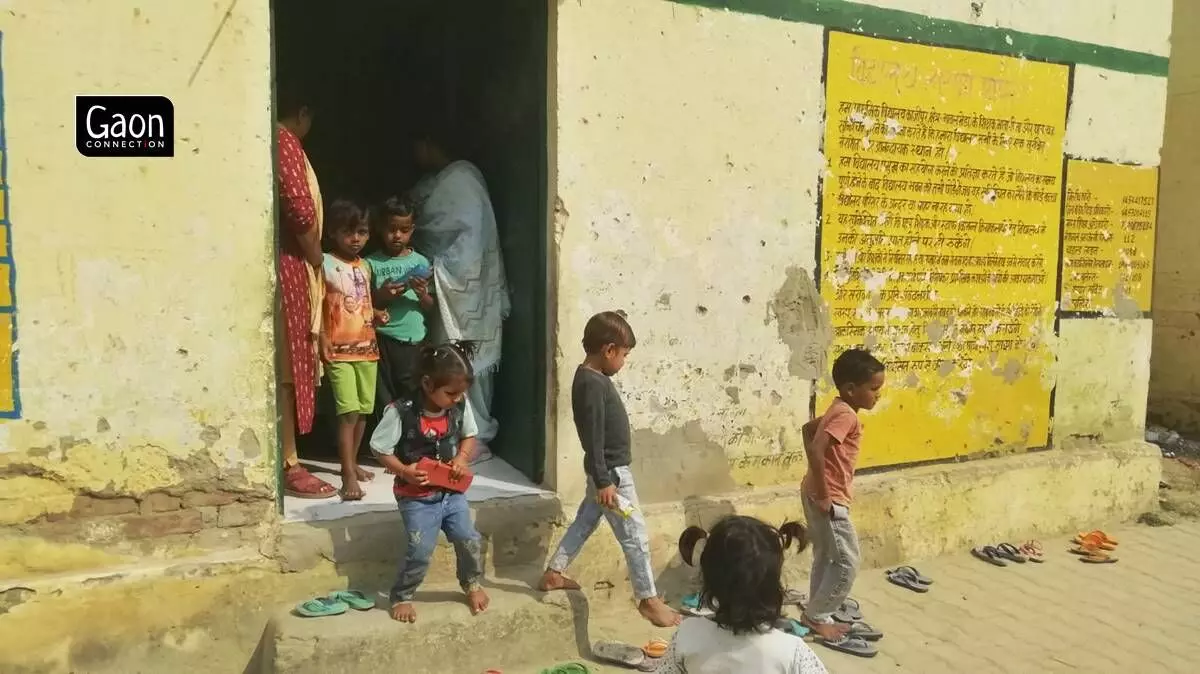
Under the ICDS scheme, hot meals are meant to be served to children, and pregnant and lactating mothers.
“They used to ask me to get them the same food but I am not allowed to do that. So, I sometimes bought them a packet of biscuits or sweets to distract them,” said Neetu Singh.
At present, meals in anganwadi are served under the Integrated Child Development Services (ICDS) scheme of the Ministry of Women & Child Development, whereas the mid-day meals in schools come under the purview of the Ministry of Education.
Earlier this month, the state government had announced that post Diwali it would resume hot cooked meals at the anganwadis. And the same started last week from November 24.
“Hot cooked meals will be provided at the anganwadi centres after Diwali. This time, there is a provision to focus on meals based on millets, and locally available fruits will also be made available as part of these meals,” Sarneet Kaur Broca, the director of the Integrated Child Development Scheme (ICDS) in Uttar Pradesh, had told Gaon Connection when questioned about when the meal scheme is likely to be relaunched.
During the COVID-19 pandemic, all educational institutions including anganwadi centres were closed across the country. However, it’s been close to two years now that these early child care centres have reopened in phases.
Uttar Pradesh was possibly the only state where beneficiaries of anganwadis were still receiving dry rations. Under the ICDS scheme, hot meals are meant to be served to children, and pregnant and lactating mothers.
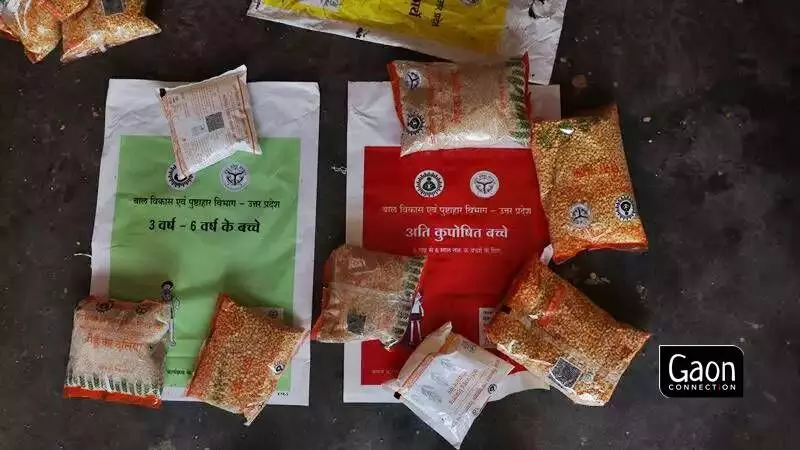
Take home ration for anganwadi children.
Nutrition Gardens for Kids
The anganwadi centres in India were started in 1975 to safeguard the health of children aged six months to six years. These centres also look after the nutrition of pregnant women and lactating mothers.
According to a press release published by the Ministry of Women and Child Development in December 2021, there are over 1.3 million (1,389,110) operational anganwadis in the country. These centres provide nutritional support to 73,691,025 children and 16,925,928 women.
Uttar Pradesh has 189,309 anganwadis with about two crore registered beneficiaries. Anganwadi workers in the state have been complaining about the lack of hot cooked meals at the centres. Last year, Gaon Connection had carried a detailed ground report on the issue.
“Most of the children here come for the food. When they are not served the meals, it is very difficult to manage them. They all wish to go back home within an hour,” Goonga Devi, an assistant at the anganwadi centre in Shahjahanpur’s Mau Khalsa village told Gaon Connection.
According to her, serving food to kids at the centre ensures that the nutritional support is for them and not the entire family — a practice that is virtually impossible to prevent in case of dry rations.
“I cannot ensure if the child is punctually eating the meals made of the dry ration that we hand out to the parents. It would be really healthy if kids eat their food at the anganwadi itself,” Vandana Saini, an anganwadi worker from Belhara town in Barabanki district, told Gaon Connection.
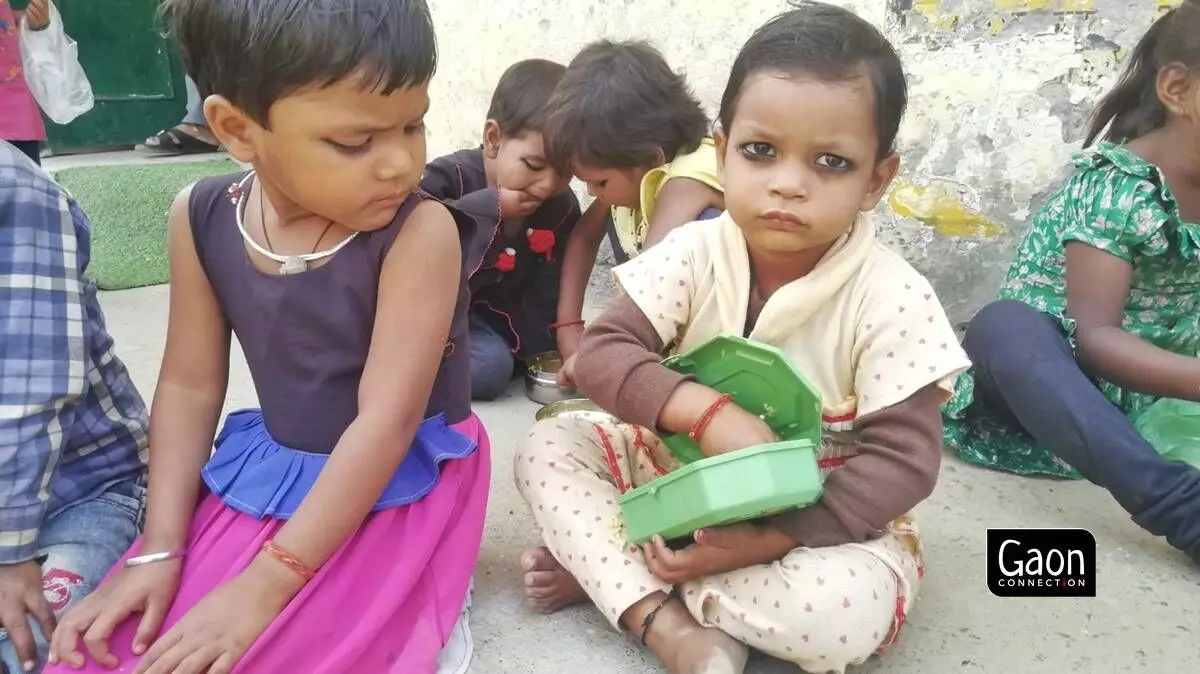
Parents are relieved that hot meals are starting. Mohammad Kaleem, a resident of the Belhara town said he was happy to know that his two daughters aged four and five years will now be getting nutritious food at the anganwadi centre.
Sushila Devi of Unnao’s Badle Kheda village believes that the number of children in her centre will increase due to offering hot meals. At present, her anganwadi has 38 kids enrolled.
“There are 3,352 anganwadi centres in Unnao. We have received orders from the department that the meals have to be resumed,” Rajesh Kumar Mishra, the district programme officer in Unnao, told Gaon Connection.
Open Air Anganwadi Centre
Meanwhile, there are centres across Uttar Pradesh that do not have a building for the anganwadi.
In Shahjahanpur’s Tiulak village, Zareena Begum, an anganwadi worker was running a centre under a tree.
“We don’t have a building of our own. When the weather is bad, if it rains, we make the kids sit in the nearby primary school, otherwise we function under a tree. Some of the buildings in the village are so dilapidated that we don’t use them anymore,” the anganwadi worker told Gaon Connection.
Akshara, the helper, working at the same centre said parents were hesitant to send children to anganwadis that did not have a built room. “What is the point of sending the children to an anganwadi that neither has a room and does not serve meals to the children, is what parents argue,” she said
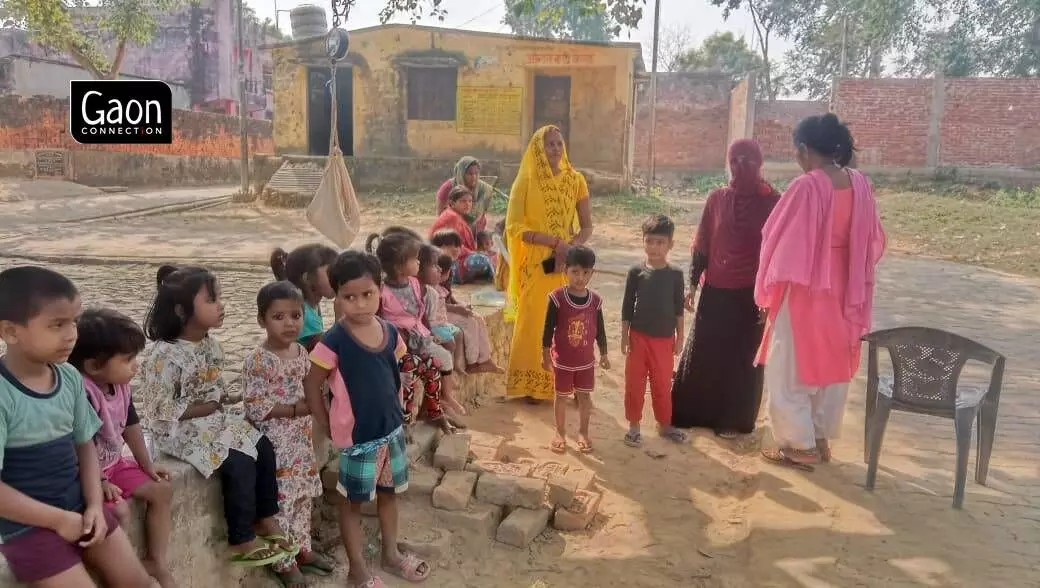
The open-air anganwadi centre in Shahjahanpur’s Tiulak village
According to a project document titled ICDS Mission — The Broad Framework for Implementation an anganwadi centre should be at least 600 square feet in area and should have a building budget of Rs 4.5 lakh.
In July 2021, while replying to a question, Union Minister for Women and Child Development Smriti Irani informed the Lower House of the Parliament that there are 927,606 children in India who are identified as severely acute malnourished (SAM). Of these, 398,359 children were from Uttar Pradesh, she said.
The National Family Health Survey (NFHS-5) of 2019-21, in rural Uttar Pradesh revealed that 41.3 per cent of under-5 kids were stunted (low height for age), while 33.1 per cent under-5 kids were underweight (low weight for age). Seventeen per cent rural under-5 kids in the state were categorised as wasted (weight for height), and 7.1 per cent were severely wasted.
“A child needs a balanced diet in order to grow well and develop immunity against diseases. Not having access to vital proteins, fats and vitamins can adversely impact a child’s growth and development. A huge amount of funds spent on public health can be saved if we work on nutrition in the early years of childhood,” Satish Gadi, a Gurugram-based physician, told Gaon Connection.
“If the foundation years have been wasted due to lack of nutrition, no degree of medical treatment can be of much use later,” he warned.
Apart from launching hot meals schemes at anganwadis, the state chief minister Yogi Adityanath also laid the foundation stone of 3,401 anganwadi centres.
Written by Pratyaksh Srivastava, with inputs from Ramji Mishra (Shahjahanpur), Sumit Yadav (Unnao), and Virendra Singh (Barabanki).







